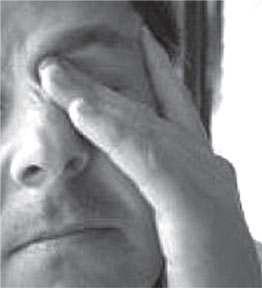|

Asian countries to make drugs affordable
Starting with Malaysia
in 2003, many Asian countries are now taking action to promote cheaper
medicines through compulsory licensing, with Indonesia being the latest
case.
by Martin Khor
Recent government action by Indonesia and India to issue compulsory
licences is extending the trend in Asia to increase access to cheaper
medicines to treat serious ailments, especially HIV/AIDS, cancer and
Hepatitis B.
 The supply of generic medicines, either through import or local
production, has been the major method of reducing prices and making the
drugs affordable to more people. The supply of generic medicines, either through import or local
production, has been the major method of reducing prices and making the
drugs affordable to more people.
When the medicines are patented, which usually results in high
prices, governments are allowed by the WTO rules to issue a compulsory
licence to enable themselves or private companies to import or produce
generic versions, which usually cost much less.
In 2003, Malaysia became the first developing country to issue a
compulsory licence to a local firm to import drugs to treat HIV/AIDS
from India.
Following this, Indonesia in 2004 issued a presidential decree
enabling the production of some HIV/AIDS drugs while Thailand in 2007
issued compulsory licences for several HIV/AIDS and cancer drugs.
In March, India approved its first compulsory licence enabling a
local company to produce a generic version of an anti-cancer drug, which
could reduce the price of treating kidney and liver cancer from US$5,200
a month (the price of the branded product) to US$160 a month (the price
of the generic product).
The latest measure was taken on September 3 by Indonesian President
Susilo Bambang Yudhoyono who issued a decree which has the effect of a
compulsory licence.
It enables local manufacturers to make, import and sell generic
versions of seven patented drugs used for treating HIV/AIDS and
Hepatitis B.
The decree said that in line with the urgent need to control HIV/AIDS
and Hepatitis B in Indonesia, “it is necessary to continue and expand
the access policies to provide access to anti-viral and anti-retroviral
medicines still protected by patent”.This is the third time Indonesia
has issued a set of compulsory licences.
The latest decree stated that the 2004 and 2007 decrees were no
longer sufficient to implement the policies.
The compulsory licence is aimed at significantly reducing the prices
of these life-saving medicines and making them accessible to thousands
more Indonesian patients.“We will ensure the availability of good
quality, safe and effective generic versions of anti-retroviral and
anti-viral drugs,” said HM Subuh, infectious disease control director at
the Indonesian Health Ministry, as quoted in The Jakarta Post on October
19.According to the decree, the generic companies would have to pay a
royalty of 0.5 percent of the net sales value of the generic drugs to
the companies that own the patents.
The latest decree enables the supply of generic anti-retroviral
products for not only better first but also second-line anti-retroviral
therapy.
“With the 2012 regulation, we obviously can improve access to quality
but affordable drugs,” Maura Linda Sitanggang, the Health Ministry’s
director-general for pharmaceuticals and medical equipment, told The
Jakarta Post.
“We’re using this mechanism concerning public interest on the
production of quality but affordable medicines to treat HIV and HBV.”
The seven medicines which are the subject of the compulsory licence
(known in this case as for “government use”) are efavirenz, abacavir,
didanosin, lopinavir+ritonavir combination, tenofovir,
tenofovir+emtricitabine and tenofovir+emtricitabine+efavirenz.
All the drugs are used to treat HIV/AIDS.The drug tenofovir (brand
name Viread produced by patent holder Gilead) is also used to treat
Hepatitis B, which affects 13 million people in Indonesia.
It had been approved in the United States for treating HIV/AIDS in
2001 and for treating chronic Hepatitis B in 2008. The combination drug
tenofovir+emtricitabine is taken in a single dose once a day.
It has been used to treat HIV/AIDS and in July 2012 it also became
the first drug approved by the US Food and Drug Administration for use
as a preventive measure, to reduce the risk of HIV infection for people
at high risk, including those who may engage in sex with HIV infected
patients.
Developing regions have also been making use of the compulsory
licence option in the WTO’s intellectual property treaty known as TRIPS.
They include Brazil and Ecuador in Latin America and Kenya, Zambia
and Zimbabwe in Africa.
In 2001, the WTO’s Ministerial Conference in Doha adopted a TRIPS and
Public Health Declaration that asserted that the TRIPS Agreement does
not and should not prevent members from taking measures to protect
public health.
Third World Network Features
Thousands risk stroke ignoring mini-stroke signs
Thousands of people are at risk of stroke because they fail to
recognise the signs of a Transient Ischaemic Attack (TIA, also known as
mini-stroke), according to the findings of a new poll(i) launched on
World Stroke Day (October 29 2012).
A Stroke Association survey of over 2,000 members of the public,
conducted by ICM Research, revealed that:
 . Over two-thirds (68 percent of people did not recognise the
symptoms of a TIA, with over a quarter (26 percent) believing they were
symptoms of a heart attack. . Over two-thirds (68 percent of people did not recognise the
symptoms of a TIA, with over a quarter (26 percent) believing they were
symptoms of a heart attack.
. Nearly nine out of ten people (87 percent) would be worried if they
experienced the symptoms of a mini-stroke, yet almost three quarters (74
percent) wouldn't take emergency action and go to hospital.
. Over two-thirds of respondents (68 percent) had never heard of TIA
and two in five (40 percent) were unaware that a TIA was a warning sign
of a major stroke.
Over 46,000 people have a TIA every year in the UK alone. Symptoms
can include facial weakness, speech problems and pins and needles down
one side of the body, but they often last for just a short time.
Earlier research carried out at the University of Oxford(ii) and
funded by the Stroke Association revealed that one in ten patients who
has a TIA will go on to have a major stroke within a week without
treatment.
The study predicted that if all patients experiencing a mini-stroke
in the UK received emergency treatment, almost 10,000 strokes could be
avoided each year.(iii) Professor Peter Rothwell, Professor of Clinical
Neurology, Oxford University and lead researcher of the project says;
“A TIA is an emergency and a significant proportion of people will go
on to have a major stroke if they don't seek urgent medical attention.
However, this poll suggests that the signs of a TIA are still being
ignored. This needs to change.”
In 2004 63 year old Robert Washbrook was mowing the lawn when he
began to feel dizzy.
After five minutes, the symptoms disappeared and Robert carried on
with his day as normal, putting the experience down to a ‘funny turn’
and one too many drinks the previous night.
A week later, Robert incurred a similar experience at work; he felt
dizzy again and felt a tingling sensation in one of his arms.
This time, Robert decided to go to his GP who told him that he'd had
a TIA and he was sent to hospital immediately.
Jon Barrick Chief Executive of the Stroke Association says;
“The results of this poll are very concerning. Over 150,000 people
have a stroke every year in the UK but up to 10,000 of these could be
prevented if more people were aware of the symptoms of TIA and sought
out emergency treatment.
Not only would this save thousands from a lifetime of disability, it
would also save the health service a considerable sum.
“Too many people remain unaware of the huge risk of stroke following
a TIA.
This needs to change. Anyone who experiences the symptoms, regardless
of whether they disappear within a matter of minutes should go to
hospital immediately. Assume it's a stroke until it's proven not to be
by a medical professional.”A TIA is a stroke-like event, which is caused
by a temporary lack of blood flow to the brain. Like a major stroke, it
can be diagnosed using FAST, but the symptoms are only temporary.
- MNT
Water workouts offer same aerobic benefits
Biking, running and walking are all good for you. But the strain can
be tough if you're overweight, have arthritis or suffer from other joint
problems or injuries. What to do? Just add water.
A study presented at the Canadian Cardiovascular Congress found that
people who used an immersible ergocycle - basically an exercise bike in
a pool - had just about the equivalent workout to using a typical
stationary bike.
“If you can't train on land, you can train in the water and have the
same benefits in terms of improving aerobic fitness,” says Dr. Martin
Juneau, director of prevention at the Montreal Heart Institute.
 He says people might assume that exercising in the water can't be as
valuable as exercising on land. Because of the resistance of the water
when you move, it doesn't seem like you can work as hard. This new study
indicates otherwise. He says people might assume that exercising in the water can't be as
valuable as exercising on land. Because of the resistance of the water
when you move, it doesn't seem like you can work as hard. This new study
indicates otherwise.
Healthy participants did exercise tests on both the land and water
cycling machines (with water up to chest level). They increased their
intensity minute by minute until exhaustion.
Dr. Juneau reports that the maximal oxygen consumption - which tells
you whether it was a good workout - was almost the same using both types
of cycles.
His study colleague Dr. Mathieu Gayda, a clinical exercise
physiologist at the Montreal Heart Institute, adds: “Exercise during
water immersion may be even more efficient from a cardiorespiratory
standpoint.”
Another finding, says Dr. Juneau, is that the heart rate of the
participants was a little lower in the water.
“You pump more blood for each beat, so don't need as many heartbeats,
because the pressure of the water on your legs and lower body makes the
blood return more effectively to the heart. That's interesting data that
hasn't been studied thoroughly before,” says Dr. Juneau.
Considering the number of people who can find it difficult to
exercise on land, the water option is promising, says Dr. Juneau.
He says that swimming may be the best exercise of all but not
everyone can swim. With the workout benefits, the low stress of moving
in the water and the reduced chance of injury, “this is a great
alternative,” he says. Heart and Stroke Foundation spokesperson Dr. Beth
Abramson notes that 85 percent of Canadians do not accumulate the
recommended 150 minutes per week of moderate- to vigorous-intensity
physical activity. “Inactive people who become physically active can
reduce their risk of heart attack risk by 35 to 55 percent, plus lower
their chance of developing several other conditions, cut stress levels
and increase energy,” says Dr. Abramson. “Even if you have difficulty
moving more, there are always solutions, as this study shows. This is
encouraging given the aging population - it's never too late or too
difficult to make a lifestyle change.
- topix.com
Alzheimer's prevention seen promising as drug cures fail
Three studies set to explore the use of experimental drugs that may
become the first to change the course of Alzheimer's disease aren't
looking to cure the illness. Their goal is to prevent it altogether.
The independent trials will begin in 2013 and run for three to five
years, testing as many as five drugs in almost 1,500 volunteers who
haven't shown any of Alzheimer's mind-altering symptoms, yet carry a
strong genetic risk for the disease or display early physical evidence
in the brain. A decision on the final study drug is expected in
December.
 The newest strategy abandons a drive that failed to stop Alzheimer's
once memories recede. Instead, as with heart disease, scientists are
exploring if the mind-robbing ailment can be prevented or at least
delayed using drugs that act roughly like Pfizer's Lipitor and other
statins. The idea, driven by new information that tracks the disease's
progression back through time, is to act years before symptoms occur to
rid the brain of proteins that can later destroy nerve cells. The newest strategy abandons a drive that failed to stop Alzheimer's
once memories recede. Instead, as with heart disease, scientists are
exploring if the mind-robbing ailment can be prevented or at least
delayed using drugs that act roughly like Pfizer's Lipitor and other
statins. The idea, driven by new information that tracks the disease's
progression back through time, is to act years before symptoms occur to
rid the brain of proteins that can later destroy nerve cells.
“We now can see changes 10 to 15 years before symptoms develop,” said
Neil Buckholtz, director of the division of neuroscience at the National
Institute on Aging in Bethesda, Maryland.
“If you can stop them, you have a chance of slowing down or possibly
even stopping progression.”
A breakthrough can't come soon enough. The number of Alzheimer's
cases globally is expected to double within 20 years as the world's
population ages, to as many as 65.7 million people in 2030 and 115
million by 2050, the Geneva-based World Health Organisation said in
April.
At the same time, studies completed as recently as the past three
months involving drugs made by Pfizer and Johnson Johnson, the world's
two biggest makers of health products, and Eli Lilly Co. showed
virtually no progress in slowing or stopping the disease in patients in
the later stages of the disease.
Lilly said on October 8 that its drug, solanezumab, provided no
benefit to advanced victims in a trial. The research did suggest the
medicine may help in a small way in those with early symptoms. JJ and
Pfizer reported on Sept. 11 that while their drug, bapineuzumab, showed
signs of reducing physical damage, it didn't affect symptoms.
The next step, Buckholtz said, is to determine if pushing the use of
drugs like these back in time, when the disease is just beginning to
form, will make a difference.
“Really what's happened is over the past 10 years, investigators have
tried to go earlier and earlier in the disease process,” Buckholtz said.
Enabling researchers to get an ever earlier look at the progression
of Alzheimer's has been the development of new imaging agents, such as
Pittsburgh Compound B or PiB, that highlights the activity of beta
amyloid, the hallmark protein that makes up the brain's tell-tale
tangles.
Researchers studying those with a genetic propensity for early
Alzheimer's, which can take hold by age 40, have also tracked changes in
brain size and cerebrospinal fluid that can occur as early as 25 years
before symptoms develop.
That work has allowed scientists to think of Alzheimer's as a kind of
chain reaction, much like that leading up to heart disease, said Randall
Bateman, a neurologist at the Washington University in St. Louis who is
leading one of the three studies.
“The questions are how long do you treat, when do you start, and how
do you measure effectiveness,” Bateman said in a telephone interview.
“It took thousands of patients over many years to show statins have a
benefit in heart disease. We're going as early in Alzheimer's as we
practically can.”
While the three studies won't help those with the disease now, they
may be able affect the lives of generations to come, the researchers
said.
Researchers in two of the trials have already determined they'll use
Lilly's solanezumab and two products made by Roche Holding that are in
earlier stages of testing. One of these trials is led by Bateman and the
other by Eric Reiman of the Banner Alzheimer's Institute in Phoenix.
These studies will test about 460 people, all of whom have rare genetic
mutations that almost certainly will trigger the disease early in their
lives.
Bateman's team will, over at least three years, test as many as three
drugs in 160 people with parents who fell victim to the disease early.
Reiman's group will study a group of families in Colombia who often
suffer severe memory loss by their early 40s. The five-year $100 million
study has interim tests that may indicate whether the drug is having an
effect within two years.
- The Independent
|


